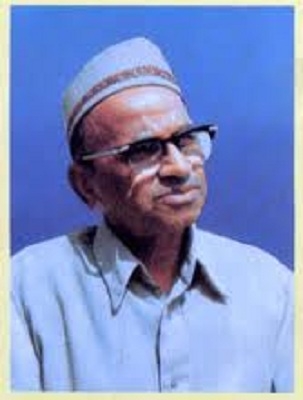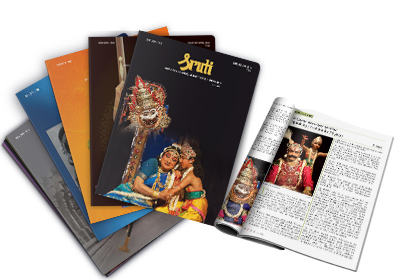
The village of Yaliwal nestles in the Kundgol Taluk of Dharwad district of North Karnataka. Dharwad has laid claim to fame as a leading centre of Hindustani classical music.
One stalwart of Hindustani classical vocal music, Basavaraj Rajguru, would have received the same adulation and esteem as his Kirana gharana contemporaries Bhimsen Joshi and Gangubai Hangal, had he not chosen to stay away from the limelight. He led a simple and scholarly lifestyle shunning publicity but he was undoubtedly a leading vocal practitioner of the Kirana gharana, excelling as performer and teacher.
When he was born in 1917 into a family of astrologers, musicians and scholars, the seeds of Basavaraj’s blossoming into artistic creativity were already sown. Descended from a lineage of gurus to the princes of Keladi, his father Mahaantaswami was intensely fond of classical music and received formal training in Tanjavur, the seat of Carnatic music. Basavaraj’s uncles were well versed in Sanskrit, astrology, bayalaata (a form of folk theatre), vocal music and the harmonium.
In such a conducive environment, it is not hard to conjecture young Basavaraj’s obsession with music and his burning desire to make himself worthy of his rich ancestry. Like all young learners of Carnatic music, Basavaraj began at the age of seven with his father teaching him ‘lambodara lakumikara’. He also became adept at singing for travelling drama companies, trying to persuade actors and producers of theatre companies to give him a chance to sing and act in their plays.
His father died when he was 13, and the future looked bleak. By a sheer stroke of luck, the blind Ganayogi Panchakshari Gawai discovered the boy’s talents and took him under his wing. Thus began a whole new world for Basavaraj.
In the gurukul parampara where the guru is lord and master and his sishyas compete with each other to acquire knowledge and skills, Basavaraj not only mastered several ragas in different styles but became adept at swimming, wrestling and cooking to adapt himself to a simple lifestyle. Panchakshari was a demanding guru exhorting his students to practise rigorously for 12 to 15 hours a day, but he was also a kind and generous teacher who gave his all equally to all his students, even those who couldn’t afford the ‘gurudakshina’. The ‘gurudakshina’ demanded of Basavaraj was that he become a master of his art and in turn pass on what he had learned to his own disciples.
At the 600th anniversary of the famed Vijayanagar Empire in 1936 in Hampi, Basavaraj gave his first public concert with his guru. The young musician stunned a crowd of 15,000 into rapt attention and silence with his soulful rendition of Bageshri and the vachana Nijaguna Sivayogi. The sishya had paid his ‘gurudakshina’!
In 1944, Basavaraj lost his guru and moved to Bombay where he had the chance to train under the legendary Kirana musician, Sawai Gandharva. When Sawai Gandharva was struck down with paralysis, he put Basavaraj in the care of Sureshbabu Mane, another well known teacher.
Soon, Basavaraj’s search for excellence took him to Lahore in Pakistan where he met Ustad Waheed Khan who had taught Panchakshari Gawai, and paid his obeisance. From Lahore he went to Karachi to train under Lateef Khan, his singing exploits preceding him wherever he travelled and performed.
Then, Partition struck. Basavaraj travelled all the way from Pakistan to Delhi clinging to the undercarriage of a train!
Back in India, Basavaraj travelled the length and breadth of the country; concert invitations came pouring in. The range of his music from dhrupad to ghazal and thumri, vachanas and natyageet spanning eight languages brought appreciation and praise from audiences, musicians and politicians. Widely regarded as the “Ace of Trumps” and the “King of Music”, Basavaraj’s popularity and fame grew by leaps and bounds. Yet, at heart he remained the simple person, a beloved musician and teacher, following a strict vegetarian lifestyle and following a regimen of puja and sadhana. He did not possess any trappings of luxury and walked wherever he could; his lifestyle was completely oriented towards preserving his voice.
In the fall of 1991, there was an opportunity for a concert tour in the United States and Basavaraj was keen on going there. But shortly before the tour he suffered a heart attack and was admitted to a hospital in Bangalore. He breathed his last with his disciple Nachiketa Sharma by his side, playing the first notes of SaReGaMa on the tanpura.
Basavaraj Rajguru died on July 21, 1991, the first of three illustrious musicians from Dharwad to go. With the passing away of Kumar Gandharva in January 1992 and Mallikarjun Mansur in September 1992, the famed Dharwad school of music saw the end of a golden era.
The Padma Shri was awarded to Basavaraj Rajguru in 1975 and the Padma Bhushan in 1991. He was conferred the Sangeet Natak Akademi award in 1981. An honorary doctorate was awarded him by the Karnataka University, Dharwad, for his immense contribution to music and his genius in composing and singing vachans in the Kannada language, making his music accessible to a wider audience in the South.


